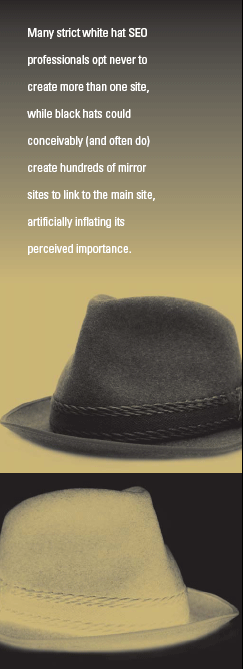Take Off the Black Hat: SEO Practices to Avoid

|
The lure of black hat techniques - those that search engines request you stay away from - for those getting started optimizing a website is sometimes too great. While these tactics can lead to a surge in rankings, getting caught could result in a drop in rankings and long-term, irreparable damage to your brand.
|
Clearly, black hat techniques work on some level, but the potential consequences deter many. Unfortunately, not enough discussions on black hat techniques are had and that has furthered its mysterious appeal. This temptation has spawned an alternate SEO approach known as gray hat - not as good as white hat, but not as dangerous as black hat. For example, many strict white hat SEO professionals opt never to create more than one site, while black hats could conceivably (and often do) create hundreds of mirror sites to link to the main site, artificially inflating its perceived importance. The gray hat option is to create supporting sites that not necessarily mirror the original site, but have unique content and don't attempt to trick users into visiting an irrelevant destination. As in everything, there are varying shades of gray, but sites that add some type of value to the overall picture - while doing their job to optimize the original site - may not necessarily raise red flags with the search engines.










